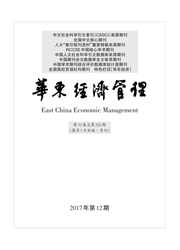

 中文摘要:
中文摘要:
文章运用Theil指数研究了世界三大经济体(APEC、EU、NAFTA)47个国家2000-2010年间CO2排放强度分布及其差异性。结果表明:总体上,样本国家CO2排放强度呈现下降趋势,说明最近十年全球性的节能减排工作有一定成效;然而,区域经济体内部、之间CO2排放强度呈现程度不一的差异,APEC差异最大,EU次之,NAFtA差异最小。在研究期间。区域内差异逐渐缩小而区域间差异逐渐增大,呈现“俱乐部收敛”的特征,这与区域经济体内部一体化进程有直接的联系。CO2排放强度差异在区域间不断增大而区域内不断缩小的事实说明了减排成本差异的变化趋势,一方面推进区域经济一体化进程(尤其是APEC的一体化)有助于减排目标的实现,男一方面这种区域问差异也为开展区域间、国家间合作提供了理论支持;
 英文摘要:
英文摘要:
Based on the Theil index, this paper has analyzed CO2 emissions intensity distribution and diversity in 47 countries from the world three big economies (APEC, EU and NAFFA) from 2000 to 2010. The results show that all the sample countries' CO2 emissions intensity has declined in recent years, indicating that the global energy conservation and emission abatement efforts have certain effect; However, the variation of CO2 emissions intensity between and within regions are quite different. The variation in APEC is the largest, then the EU, NAFTA the least. During the study period, variation within regions gradually narrowed while variation between regions increased, which pertormed "the elub convergence" feature, indicating that the regional economies integration process has a direct effect on the former. The evidence in this paper shows the different trend of the cost on emission reduction. The conclusion is: promoting regional economic integration (especially the integration of APEC) helps the realization of reduction targets; and cooperation among countries and regions may decrease the variation.
 同期刊论文项目
同期刊论文项目
 同项目期刊论文
同项目期刊论文
 期刊信息
期刊信息
